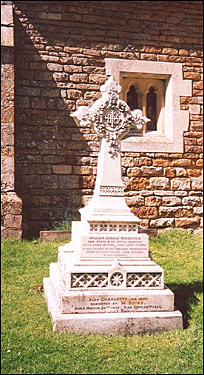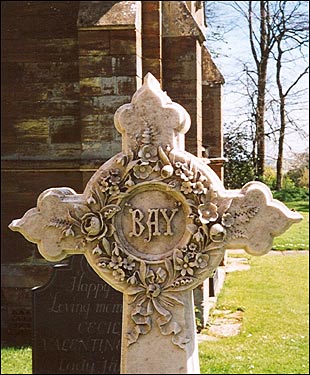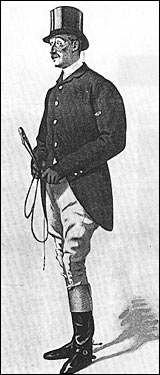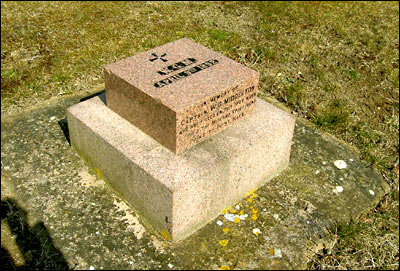![]()
The contents on this page remain on our website for informational purposes only.
Content on this page will not be reviewed or updated.
|
Captain William George (Bay) Middleton
|
|||||||||
|
William George Middleton was born in 1846 to a sporting Scottish family with an uncle who was Master of the Fife Foxhounds and his mother was a Hamilton; but gradually the family estate was sold off to the encroaching coal mining operated by the great coal and iron family of Bairds. His family moved to London and was privately tutored and then gazetted into the 12th Lancers in 1863 to Co Tipperary, Ireland. This was a time when Victorian men liked to call each other by nicknames and he was soon known as ‘Bay’ Middleton. Whether this was due to the colour of his hair or after the name of a famous horse that won the Derby in 1836 is not known. Ireland was a sporting paradise and he was soon whipping-in to the Regimental Harriers until he was moved to Cork and made Master of the Garrison Drag hounds and he also spent time riding in horse races winning his first race in 1867 at Cork Park. His looks were not particularly prepossessing, he was under medium height but he had immense charm and charisma. He also had an aesthetic side and collected Dresden china, liked the theatre and was a great practical joker. In 1868 when Mr Gladstone, the British Prime Minister, appointed Earl Spencer to be the Viceroy and Lord Lieutenant of Ireland. But it was not a position that he found entirely to his satisfaction as he found the Society in Dublin not up to his rank. He found that riding with the local fox hounds would fill much of his time although not a skilful horseman and fell off frequently. This was a time of civil unrest and the authorities felt that he should have an escort and ‘Bay’ Middleton was chosen as his ADC, he was based at the Viceregal Lodge in Dublin and was soon promoted to be a Captain. The Earl appreciated this courageous and skilful rider who also had charm which made his days out riding an enjoyment. By 1874 Mr Gladstone was out of office and Mr Disraeli, the new Prime Minister, had elected a new Viceroy. Earl Spencer returned to Althorp, his home in Northamptonshire, where he soon took over as Master of the Pytchley Hunt. Bay Middleton resigned his regiment and also returned to England where Althorp and many other great houses were open to him with Earl Spencer being his friend. This part of the country held many opportunities for him to hunt to hounds and also to partake in steeplechase races. He did however return to Scotland each February to hunt with the Eglinton and he met and became engaged to Charlotte Baird in 1875. She was the daughter of a wealthy shipping family with brothers who were keen riders. The friendships that Earl Spencer and his wife had forged with the ex-Queen of Naples and then with her sister, the Empress of Austria, were to be influential for Bay. The Earl invited him to pilot the Empress when she visited Althorp in 1876 and he was happy to continue riding with her and guiding and advising her on each of her visits to England and Ireland. He was instrumental in the choice of many horses she rode ensuring that they would be suitable for each venue she hunted and making sure that she was shown how to ride in each locations. In turn he was invited to stay at the Habsburg palace in Hungary called Gödöllö although Rudolf, the son of the Empress, was not polite to him as he probably thought that his mother should not invite such non-aristocratic people and snubbed him when they met in England. After the last visit of the Empress to hunt in Britain he did marry Charlotte Baird at St George’s church in Hanover Square, London on 25 October 1882. They had one child, a girl called Violet Georgina, who was born in 1886 and they lived in Hazelbech, Northamptonshire. In April 1892 having agreed to give up racing he begged to race once more in the House of Commons Steeplechase for the Midland Sportsman’s Cup at Lord Willoughby de Broke’s estate at Kineton, Warwicks. This was a three and a half mile race on ground that was extremely hard and with 13 riders; Bay rode an aged horse called Nightline in the 14 stone class. Having covered two thirds of the course and just jumped into Graveyard Field [site of the Civil War battle at Edgehill] the horse stumbled and Bay fell. Although the fence was low the ridge and furrow ran at right angles to the leap and was high and deep. It is not certain exactly how the resulting death actually was caused and those who ran up to help him were horrified to find he was dead. His body was taken to Kineton House and then to Hazelbech church with the coffin covered with the Union Jack and flanked with lances from his old regiment, the 12th Lancers. He was buried in full riding costume at a large funeral with mourners from all his hunting and racing fraternity. In memory of their friend Mr and Lady Caroline Jenkins erected a granite memorial on the exact spot where he fell and Lord Willoughby had the enclosure around it planted. Although this is now on an MOD site and cannot generally be visited by th public, permission was obtained to take the photo below.
His grave is by the south door of Hazelbech church and is now surmounted by a handsome white marble memorial with his nickname ‘Bay’ on the reverse. The graves of his wife, daughter and her family are all nearby. |
|||||||||



